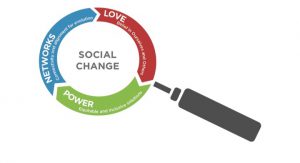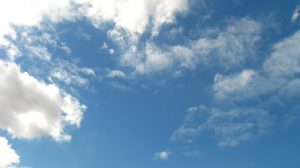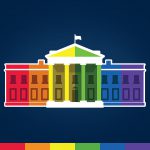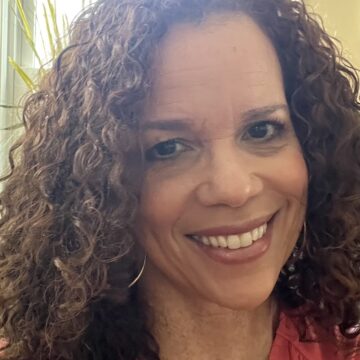Posted in Love
February 19, 2019

Photo by tracydekalb, “Redbud Love,” shared under provisions of Creative Commons Attribution license 2.0.
The following post was originally published in 2014, and has been edited. In many ways it feels even more relevant five years later …
Over the past dozen years or so at IISC (our half-life as an organization, and my whole life as a member of this amazing community), we have seen and experienced some interesting progressions. In our Facilitative Leadership for Social Change trainings and consulting work, we talk about the “interior condition” of effective collaborative and network leadership. When I first joined the organization, we used to say that collaborative leaders and change agents embraced an ethic of “service, authenticity and respect.” Then we made the move of changing “respect,” which came across to some as a bit weak, to LOVE. For the first couple of years after making this switch, when we asked “What’s love got to do with it?” with respect to effective leadership and work for social change, there were definitely some uncomfortable silences. Some participants would ultimately want to rename love as “respect” or “passion.”
Then in 2009 we started noticing a change. More heads nodded in rooms when we mentioned the “L-word,” less nervous laughter and shifting in seats. In one particularly striking instance, during a training with health care and public health professionals, a senior and very respected physician responded,
“What’s love got to do with it? Everything! Beyond my technical skills, I am effective in so far as I am able to really see my patients, students, and colleagues, to make them feel seen for who they are.”
Read More
January 7, 2019
“That which counts, can rarely be counted.”
-Albert Einstein

Image by garlandcannon, used under provisions of Creative Commons Attribution License 2.0.
In a couple of articles that have been re-cycling in different social circles, the reminder is offered that tipping points for social change do not need anywhere close to a majority of actors.
A few years ago, scientists at Rensselaer Polytechnic Institute explored what it takes for an idea to spread from few to many, for a minority opinion to become the majority belief. According to their study, the RPI researchers said that the answer is 10%. When one in ten people adopt a stance, eventually it will become the dominant opinion of the entire group, they say. What is required is commitment.
More recently, researchers from the University of Pennsylvania and the University of London conducted an experiment that suggests that for activists to achieve a tipping point around change, 25% of a given population is required. They published their study in the journal Science.
Of course there are complicating factors, including the fact that there are often competing factions each vying for their own 10-25% and with social media and disinformation campaigns, confusion can rein and commitment may require an additional degree of diligence. Nonetheless, we might take more heart in the power of the few.
And this is clearly not just about numbers and counting.
Read More
December 27, 2018
“I need love
Not some sentimental prison
I need god
Not the political church
I need fire
To melt the frozen sea inside me
I need love.”
– Sam Phillips

Image by Luke, Ma, “Love by Nature,” shared under provisions of Creative Commons Attribution License 2.0.
I started this year with a post focused on love, and this idea that 2018 would be the year of love. This thinking wasn’t offered through rose-colored glasses, but from a shared sense and conviction that love would be required to see the year through. And not just any kind of love. In that original post there were a few definitions and quotes that we have been playing with at IISC, including these:
“All awakening to love is spiritual awakening… All the great social movements for freedom and justice in our society have promoted a love ethic.”
– bell hooks
“Justice is what love looks like in public.”
– Cornel West
“To show compassion for an individual without showing concern for the structures of society that make him [sic] an object of compassion is to be sentimental rather than loving.”
– William Sloane Coffin
“Love is seeing the other as a legitimate other.”
– Humberto Maturana
“The ultimate act of love is allowing ourselves and others to be complex.”
December 17, 2018

Image by Graylight, used under provisions of Creative Commons Attribution license 2.0.
As I was just starting work at IISC, back in 2005, our founding Executive Director Marianne Hughes, introduced the staff to the work of John Paul Lederach, and specifically his book The Moral Imagination. As I recall, she did this as a result of a sabbatical during which she explored the power of networks and of art in social change. These two things show up centrally in Lederach’s work. Lederach has spent years doing peace and reconciliation work in some of the most intense and entrenched conflicts in the world. And he writes not really as a master technician, but as a poet, which is very much by intention.
I thought of The Moral Imagination a couple of months ago, when I began to realize how starved many people I meet seem to be for alternatives to what we currently have as mainstream systems in this country. Many are speaking up against and resisting what is not working, has long been unjust, and is fundamentally sustainable, which is crucial. And in the absence of clear alternatives (see “reimagine” and “recreate” in Spirit in Action’s image below), what can ensue is … conflict. Entrenched conflict, with no creative point of release.

I also thought of Lederach’s book, because he writes how central networks, human webs, and authentic human connection is to the work of peacebuilding and reconciliation. Up until recently I had thought about peacebuilding as a field as having more to do with what goes on in “other places” like Ireland, Sudan, Colombia, Tajikistan. If nothing else, these past couple of years have provided a need to adjust that understanding – peacebuilding is needed at home.
So I’ve been scouring Lederach’s writings, and there is a lot that resonates. Lederach was recently featured on a powerful program of On Being with actress and activist America Ferrera (no doubt another reason he has been on my mind). There is much to say about The Moral Imagination, but for now I am offering some passages and quotes that struck a chord and I’m curious to hear what reactions those reading have … Read More
December 6, 2018

This week, my boss told me she loved me. It was not problematic, in fact it was beautiful. It was following a few days we had taken as the IISC network to get clear on our next strategic steps, considering how we are part of a movement of racial equity change makers.
While we have spoken for several years about how love is a central part of our collaborative change lens, we are doing an ever-better job of embodying it, first with ourselves and then with our clients.

Cornel West tells us that justice is what love looks like in public. He and others have revitalized a tradition that is more holistic and does not segregate love, both in the feeling state and the action state, from our work for equity. Many have preceded us who carry that wisdom. In gatherings of activists and change makers, I hear people yearning for our full humanity, to be able to have emotions as we work, to feel whole in our beings, to feel like we each belong. In our work spaces, especially when we are working at our life purpose, we yearn for satisfying and impactful spaces where we are paid what we need, can bring a wholeness, and can enjoy people and art. One of our labor foremothers in Lawrence, Rose Schneiderman, put it this way– “The worker must have bread, but she must have roses, too.”
Over the past five years, we have been trying to center love. We do that in light ways, by using the word, and by bringing a variety of practices to our IISC and client spaces: intentional breathing and meditation, appreciations, embodying joy and love as we start a day, reclaiming space and time for fun and playfulness and relaxation. While these can be light touch, they are also not to be underestimated. Too frequently, we and others, make it through many a work day without any of this.
And this year we have been committing to dipping our toes in further. Some of the ways we are experimenting with and aspiring toward love at IISC:
- We prioritized a small group of practitioners to imagine what equity work with love at the center looks like and how that differs from an organizing or facts-based strategy
- We let each other know that everyone belongs and that everyone is loved.
- We take pauses before entering difficult work or conflict settings
- We try to start our own and other gatherings from a place of vision and abundance
- We are embedding more practices into our training and consulting and coaching work
Love is definitely an emotion and can be expressed in words. It can also be felt more fully if it is in everything we do from how we interact throughout the day, to how we design spaces, to how we use time and build in pauses, to how we deal with mistakes and conflict.
This week, as we gathered around what might be heady material, editing our theory of change and planning our next strategic steps, we used half a day to get to know each other and our cares through honoring ancestors, building an altar, and talking about our fears and anger. And this intent was spread throughout our time.
One activity that many found deeply connecting is described below. I am calling it “Greeting with love and joy.” It was intended to ground, to center joyfulness, and from there to greet one another in silence and with a depth of connection.
These are some of the ways the activities and spaciousness made me feel vulnerable, more willing to share more truth, more open to hearing others and more open to seeing them fully, less reactive, loved.
Love surely is the answer to many questions. And it is not easy. We need to honor the time it takes, and we need to take seriously how to prioritize and integrate love, especially during times of conflict, and in all our work, including finance!
We are curious how love comes to work for you. What are some examples? Where are you feeling challenged?
Greeting with Love and Joy
This activity starts with time in a standing meditation to get grounded and connected to the world around us, to “gather” some elements we might need and to recall a time of joy. We then spend time in silence, connecting to others in the gathering, by walking around and stopping to gaze at another person from that place of joy or love. We end with some music or a chant to allow people to shift back into sound and return to the circle.
Guided breathing to center and to gather elements.
Ask people to stand with legs shoulder-width apart and either eyes closed or gazing down. Lead them through a series of deep breathing:
- into their centers.
- into their length, grounding into the floor and connecting through the head to the sky, gathering an element from each place.
- into their back bodies to feel supported by ancestors and into the front body thinking about their commitment to the work.
- into their side bodies to connect to people on either side of them and in the broader community.
- back to center to imagine a moment of joy or love, to envision the sound and smells and feel that so they can carry that into the next piece of the activity.
Walking activity
Now let that picture and feeling of joy expand in your body from a kernel in your belly, out through your body, and to begin to expand beyond you.
Walk around for a minute with your eyes mostly down, feeling your joy in your step.
Now, raise your eyes and with the joy throughout your body, stop as you encounter another person. As you encounter each person, you are invited to pause for 10-30 seconds, as you are comfortable, and gaze directly into their eyes. You are bringing your joy & love to the greeting, you are seeing them in their joy, and you are receiving the love and joy in how they are silently greeting you.
Continue this for at least 5-10 minutes so that people can greet most others in the room. Consider integrating virtual participants by having multiple video stations so that participants in the room can stop by those stations to gaze at their colleagues who are remote.
Invite people to return to the circle/their seats. I ended with a short song/chant that I know as a way to bring sound back to the room and transition out of this intense moment of connecting. You can also ask people to journal or share feelings or an appreciation after they return. The intensity is both in insisting that we are connecting from love and in the silent but powerful eye gazing.
November 19, 2018
“By coming to the edges; by staying longer in the place that is supposedly without utility, empty, null and void; by dwelling with the bewildering awkwardness and staying with the trouble; other places of power become visible.”- Bayo Akomolafe

At a recent community of practice gathering of IISC consultants – a space in which we reveal our learnings and challenges – we explored the radical importance of creating spaciousness in our personal lives, as well as in our training and facilitation rooms. I believe spaciousness is the slow food of facilitation.
Slow food is used in progressive circles to describe living an unhurried life and taking time to enjoy meals and simple pleasures. It’s the complete opposite to fast food culture which, much like American work culture, is based on white and capitalist dominant norms of urgency, desperation, quantity over quality, and progress as always bigger and more.
We have forgotten to slow down. To say “no” lovingly. To just stop and pause lightly even for a few moments or minutes. IISC affiliate and former long-time Senior Associate Andrea Nagel shared at our community of practice session, “We can’t just talk our way into being. We need to be ‘in being.” Miriam Messinger, IISC’s director of practice, agreed and pointed out that “We have a fear of ‘being’ and we are rewarded for ‘doing’ in our culture.”
In our work with a client organization’s Race Equity Design Team, a member shared in a recent gathering, “We do have people who say no, but they have little power – we dismiss them. There is an unspoken sensation that we realize that ‘no’ is really not an acceptable word.” The team challenged themselves to slow down and get to the heart of things.
As facilitators and trainers, we can uproot white supremacy and capitalist culture just by adding spaciousness and slowness to our approach and design of meetings and gatherings. We can start with meditation and art, and we can focus on flow. Reduce the number of topics on an agenda. Pause to give people chances to breathe or take in moments of silence. Encourage people to empty their thoughts onto a page. Bring them into nature to walk and stretch. We can be firm on allowing at least one hour for people to eat lunch at day-long meetings so they can eat with intention and connect to people, and give no fewer than 15 minutes for a quality break. We can talk slower, walk around the room slower, and let space and time ebb and flow to allow people’s emergent thoughts to come into conversations. These thoughts are often the most strategic, brave, and authentic, and often the ones that allow new ideas to come into being and new cultural norms of collaboration to take hold.
There are times for high energy in a training or facilitation, but we can still offer spaciousness — more time for conversation and more time for self and group care. The rush of life and dominant culture will take us and our conversation over unless we intentionally create spaciousness. We have to re-condition ourselves to slow our minds and reduce or focus less on our “tasks”. If we disrupt the dominant pattern for one minute, one hour, or one day, it’s a victory in our current society. We can engage in practices to help us “be” in true and transformative collaborative relationship with one another.
Let’s breathe together. Thanks for listening.
October 10, 2018
The board and staff of Interaction Institute recently gathered to learn from others working to bring about racial equity and to talk about how we build a board structure that supports or propels our work in new ways. To start the day, we did an icebreaker I called, “Reclaim for Liberation.”
A colleague planted this seed. What are the qualities or traits we once had that have been taken from us—by family dynamics or trauma, by histories of oppression, or as we have become adults and try to live in the dominant culture? And which of these do we actually want back?
Sometimes, as we are reaching for liberation, we find ourselves fighting against what exists. What we need more of is the vision of what we are heading toward. And sometimes, we imagine that we need completely new tools and skills and ways of being to get to our vision. What if we actually know (or used to know) most of what we need for transformation?
Growing up in this culture and transforming ourselves to fit, particularly as women and/or people of color and/or queer people, we shed things that are not only elemental to us but deeply important for our ability to move forward. Much of this is related to how white supremacy impacts our ways of being and asks most of us to be much smaller than nature would have us be.
When we did the exercise below, people told each other short stories of what they wanted to reclaim for the journey. The words that came up included play, song, dance, carefree, silly, laughter. And then the members of each small group used their bodies to create a sculpture embodying the words and feelings of their group.
It would have been even more effective if we then had kept those ways of being fully present throughout the day, particularly when more challenging conversations emerged. I would like now for us to practice bringing those skills into difficult conversations and see if they help us to speak and solve together.
Try this meditation and share what you see in the group. Do more possibilities or new pathways forward emerge as a result?
Reclaim for Liberation
Allow 20-30 minutes, ideally.
Let people know that in this work for liberation we sometimes feel that we don’t have all we need for change. And perhaps some of what we need we have lost on the way or was taken from us. We are going to spend time individually and as a group reclaiming some of the lost qualities that can be important to us now.
1. Start with a guided meditation (5-6 minutes to set up and lead people in and out)
- Ask people to take up space in the room; to spread out; can stand or sit
- Get planted—feeling souls of feet on ground, butt on chair if seated; close eyes or soft gaze
- 10 deep breaths
- Feel your body planted—feel the souls of your feet touching the ground, feel your hands resting on your legs or by your side
- Roll each shoulder back—breath into your full breadth, feel connected to those around you
- Hear the sounds of the room
- Breathe to elongate—feel the roots shooting down from feet, up from the crown of the head reaching toward the sky—feel your full length and integrity
- Ask people to travel back in years; begin to imagine a place you felt joy or lightness, a sense of freedom
- What sounds do you hear?
- What are you seeing around you?
- Are there any smells?
- Look around
- Are you inside or outside?
- Is this a place you recognize or a specific setting that is important to your childhood?
- Are there people around you or are you alone?
- Play in this space, enjoy the feelings.
- Is there a piece of yourself that is present that you may have left behind? Is there a feeling or essence of that self that you want to bring forward and reclaim? Is there something (playful, clear, relaxed) that may be useful for your liberation today?
- Draw people back to the room – come back into your body, hear the sounds around you, become more conscious of your breathing again, take time to come back into the room, and – when you’re ready – open your eyes.
2. In Trios (8-10 minutes) [decide in advance if there are any instructions needed about how to form trios—such as with people you don’t know or with whom you work less frequently]
- Each person gets a minute to share the quality that you want to bring forward. Ask yourself: What did I see in my younger self that might serve me in my liberation work today? Share a picture, words or a posture.
- Each group decides on a way to share back with the full group—encourage a physical sculpture or representation that captures everyone’s words or the quality of what was shared
3. Share back with group—up to 1 minute per group.
4. Ask people to call out some of the other words or feelings they want to carry into the day. You may want to capture some on a chart so you have a visual for your time together.
5. Decide as a group how you will keep pulling in these useful ways of being. This can be particularly useful if you have decisions to make or tensions to address. Ask people to consider an embodiment of their word or quality before engaging in such a conversation.
February 20, 2018
I am becoming pretty good at compartmentalizing – focusing on the work that is right in front of me, even as more tragedy surrounds us and more outrage wells up within me. It’s certainly functional to be able to do that. But I don’t know that it’s always good. Part of me despairs. How many more people – and especially children – have to die needlessly? How is it that in other countries, people experience mental illness, firing from a job, expulsion from school, and all manner of personal tragedy without turning to mass killings? I want to be in the streets. I want to raise my voice with others in ways that will make a big and immediate difference. I want an end to politicians offering “thoughts and prayers.” I know there is power in prayer, and I also know that powerful prayer motivates powerful, compassionate action.
In a workshop the other day, we were exploring the ways that collaborative leadership practices support organizations and networks in pursuing broader diversity, deeper inclusion, and expanded equity and justice. Someone asked me if I really thought we would ever get closer to justice in this country, given the recent sharp turn we’re taking in the opposite direction. I offered two thoughts in response: (1) I think things are getting much better and much worse at the very same time. There is an expanding consciousness of the sacredness of human life and the interconnectedness of people and the planet; and many people who suffer under oppression are finding ways to resist and to build alternatives. That is all advancing and it’s good. And, the forces of racism, sexism, homophobia, zealotry, and more are also advancing, most recently with tacit and explicit support from the White House. (2) As a woman of faith, what keeps me going is anticipating that in 50 years, when people look back on this era, they will see it as the last moments of flailing by a dying beast. May it be so!
Our friends at Spirit in Action remind us that there are four interdependent ways to transform society: “reimagine culture, resist domination, reform institutions and recreate society.” Whichever of the “Rs” are in the center of your work, go forth with strength and power!
January 31, 2018

Power. Networks. Love. These three aspects of the IISC’s Collaborative Change Lens were not the official theme of the Victory Institute’s 2017 International Lesbian, Gay, Bisexual, Transgender, and Queer (LGBTQ) Leaders Conference, but they were woven throughout everything that happened there.
The Victory Institute works to get LGBTQ people into elected and appointed office. Their annual conference brings together elected officials, leaders, and advocates for three-days. The content of the conference focuses on skill-building, information sharing, and formal and informal networking.
The first gathering of this group took place in 1984 with about a dozen people. Attendee John Heilman, city council member of West Hollywood, described the gathering as “more like a support group” than a conference. It has now grown to a convergence of over 500 attendees from all over the world.
Power
The reclaiming of power is central to the mission of the Victory Institute: “LGBTQ Victory Institute works to increase the number of LGBTQ people in public office and to provide programming, service and other support to help ensure their success.”
Why do we need more LGBTQ people in public office? With characteristic wit and bluntness, former U.S. Representative Barney Frank, the first person in Congress to come out voluntarily, said, “If you are not at the table, you are likely on the menu.”
The data tells the story this way: there is a direct correlation between the number of LGBTQs in elected office and the inclusion and equality of a jurisdiction’s policies.
Networks
In traditional ways, conferences tend to have a strengthening effect on networks. At plenaries and breakouts, attendees of the Victory conference had opportunities to connect around shared interests and maybe even to flirt a little. But the conference used the opportunity of the traditional schmoozing times to amplify traditionally marginalized voices. There was a “Leading in Color” reception which lifted up people of color, an International reception, and a Women Out to Win reception. The Institute also strengthened their pipeline for young leaders with the Victory Congressional Internship Meet & Greet.
Love
The feeling of love was palpable throughout the conference. Because of the bullying and harassment we’ve experienced, no one knows better than the LGBTQ community how much humans need to be celebrated and cheered. Whenever someone announced they were running for elected office, the audience burst into applause.
The spirit of love and humility was also present in a frequently repeated quote from Danika Roehm, the transgender metalhead stepmom, elected as the first openly transgender person to the Virginia Assembly – the first to serve in any state legislature actually. Roem won against Robert Marshall, the sponsor of a bill to restrict public bathroom use by transgender people, who referred to himself as Virginia’s “chief homophobe.” After the election, when asked if she had anything to say about Marshall, Roem said, “I don’t attack my constituents. Delegate Marshall is my constituent now.”
Pretty lucky constituent.
January 3, 2018
“We rise and fall and light from dying embers, remembrances that hope and love last longer
And love is love is love is love is love is love is love is love, cannot be killed or swept aside.”
– Lin Manuel Miranda
We know we are not alone at IISC when we say that 2017 left many of us a bit exhausted and breathless, if not somewhat dumbfounded. What occasionally felt like the wheels coming off of our country’s management and morality caught us by varying degrees of surprise, which is not to say that the underlying frustration and ongoing dynamics of “othering” were necessarily shocking. Rather, the unabashed in-your-face tenor of it all got to points where it was all I could do to stay even minimally tuned in to have at least a fingernail on the pulse of things (but really, there were few places to hide!).
I am grateful that as an organization we take a break at the end of the year to rest, restore and reflect. And while some of us may feel like we could use another week (or two), I for one feel ready and resolved to step boldly into 2018 with an open heart and humble sense of not knowing (what will happen, what is in others’ hearts and minds, what the answers are). I would characterize this as a stance of love or loving kindness. Read More
July 18, 2017
One recent night, my son stomped out of the house, hurt, telling me that I should stop defining who he is and what he can do. My daughter followed after him, asking that I think about what I had done to cause the blow out. I meditated, cooked dinner, and two hours later we were eating a great puttanesca together.
That evening – and other parenting moments – have led me to recognize that my best liberation and change work these days is mothering. While there is so much to write and share about parenting, here I will glean what I can from my children about ways to improve work.
Here are five things I do with or learned from my kids that might work for you as well.
-
Play
Just do it. Be silly, open up new parts of the brain, laugh, release endorphins. Do it at home and do it at work. Brain science tells us that laughter and play opens us and what flows is much more effective than working from worry and constriction. It does not mean that there are not real-life worries and real dangers everywhere—poor health and racism, for starters—but it is an invitation to play along the way. I re-learned how to play from my kids. I invest time in being as goofy with them as possible and bringing some of that spirit of laughter and fun into my work. We work a lot, it should be fun and fun generates new possibilities. What is the work equivalent of running through the fountain or blowing bubbles? What do you do at work to create fun and be creative?

-
Honor who they are and not only what they do or how well they do it
In work settings and movement building efforts we of course need to keep our eye on results. In racial equity work, that focus is particularly important as we have seen how changes in laws do not necessarily lead to changes in heart, nor does understanding lead automatically to reducing disparities. And yet, we know from parenting that honoring who a person is and valuing them for that is so much more important for long term well-being and success than a good grade or accomplishment. How can we keep our eye on the big changes as we honor ourselves and our co-workers for who we are and the spirit and talents we bring and not just what we produce?
-
Be present
Walking down the street, it is often the adults walking with children—holding hands or skipping or watching the trains – who seem most present and look happiest. It is a reminder that of how critical presence is for all of us. At a recent convening, The Confluence sponsored by MAG, someone offered this gem: “less prep, more presence.” Let’s make sure that we bring impeccable presence to our workplaces. Whether at large gatherings, staff or member meetings, or one-on-one conversations, bring your full presence. How do you stay present, planting seeds that flourish in the moment and over the longer term?
-
Show love and caring
While this may be an “of course” in family, it needs to be just as much so in the workplace. At a network gathering last week, I went to the bathroom, tired, after facilitating a challenging session on health equity. I found someone there in tears, having just lost a family member. I was able to show her some tenderness. The next day she reminded me how important the care I offered was for her and, in fact, opened her to learning. These moments, large and small, present themselves daily. What is the workplace equivalent of the schnuggle? Can you find more moments to show love to your co-workers and partners? What might that elicit?
-
I don’t need to be in something with my kids to know how incredible it is for my kids.
While my daughter plans a social justice orientation program for students at her college, I can simply watch her and her peers create and experiment; I can stand aside and watch it blossom. I have to let my kids experiment in the world and experience their ups and downs. I don’t have to help or be in it to know it will be an incredible learning experience. This is a good reminder to allow people to try new things and to flourish and stumble with their work, and learn from it all along the way. How do you practice standing aside?
People in organizations – just like in our families – need this level of tending and love. We all need play, space, and autonomy to create great things. It is a truism that change starts at home. Perhaps it is less clear that home can improve our work. Let’s garner those lessons.
What else can we learn from the kids?
February 9, 2017

Last year we organised a Peacebuilders Workshop to create space for practitioners involved in peacebuilding work locally to come together and critically appraise our practice and identify the lessons learned about peacebuilding in conflict/post-conflict contexts. The discussion at that workshop calls to mind a number of important aspects of peacebuilding work that align with our approach at IISC.
Peacebuilding requires at its core the kinds of human principles or values which resonate with those required for other kinds of social change work. These include creativity, relationship building, and networks. Read More















